Story by Donald H. Harrison; photos by Shor M. Masori


SAN DIEGO – Lucky for me, I had my 17-year-old grandson Shor with me at San Diego Pin and Patch Con, which was held in Montezuma Hall at San Diego State University on Saturday. Besides being the photographer for this story, he also was a translator. As he explained it, he knows “how to speak nerd,” while I, his 72-year-old grandfather, am very much bewildered by some of the images and references seen at the show.
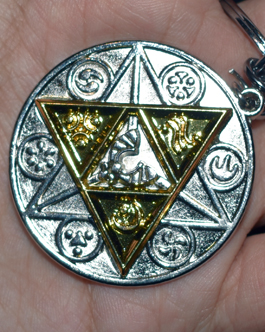
For example, what looked to me like an elaborate Magen David, in actuality was the Triforce symbol from the video game series “The Legend of Zelda.” Shor taught me that the Triforce magically unites the symbols for power, wisdom, and courage bequeathed to the world by the goddesses Din, Nayru, and Farore.
Common knowledge for Shor and his generation. A totally new world for me.
I am not totally oblivious to pop culture. For example, I recognized pins celebrating Jewish pop culture star Larry David of television’s Curb Your Enthusiasm and I knew that another pin bearing the slogan “Live Long and Prosper” referred to the salutation of Star Trek’s logical alien Spock, portrayed by Leonard Nimoy, a devout Jew who bestowed upon the science fiction world that phrase accompanied by the split-fingered gesture that rabbis use when delivering the priestly blessing.
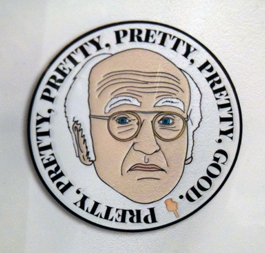
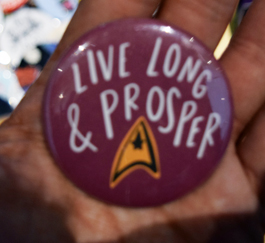
One exhibitor had a doll of E.T.holding a box of Reese’s Pieces, the lovable alien’s favorite snack, and I remembered that Steven Spielberg produced that film. I also recognized that one company’s name, “Yada, Yada, Yada,” came from the very Jewish Seinfeld show starring the Jewish comedian Jerry Seinfeld. “Yada Yada Yada” was an expression that essentially connotes someone talking on and on. A pin with Superman’s image on it harkened back to the 1930s when Jewish partners Jerry Siegel and Joe Schuster created a kind, generous, and honest “super-man” as a rebuke to the hateful philosophy of the Nazis in Germany, who thought they were a super race. So, I was also pleased to see a pin with a red line for “No” diagonally slashed through a swastika.
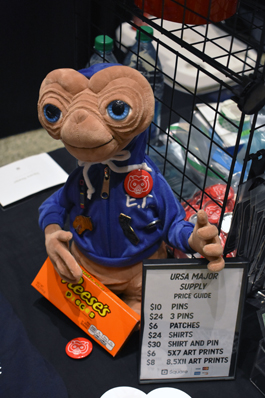




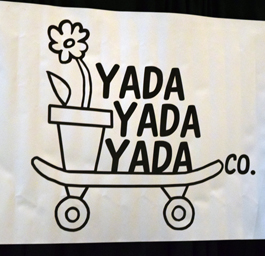

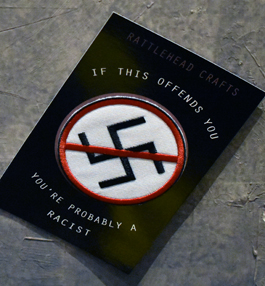
Shor had to explain to me that another pin with Jewish comedian Ben Stiller’s image was from Zoolander, in which Stiller plays a vacuous male model. He also had to bring me up to date on a prequel to Star Wars, explaining that the Israeli-American actress Natalie Portman portrays Queen Padmé Amidala, the mother of Princess Leah and Luke Skywalker. Further, he explained, “The artist drew baby Luke and Leia breastfeeding, which does not appear in the movies because Queen Padmé Amidala died giving birth to them.”
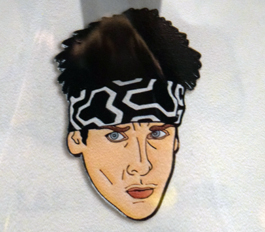
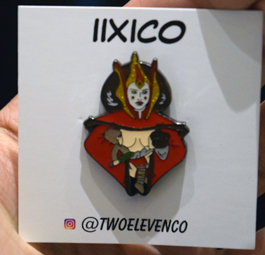
Okay, I’ll admit it; I’ve always been a Star Trek fan, and never a Star Wars fan. Shor somehow has been able to navigate both universes.
Miguel Brizuela, a proprietor of BB Cre8, was a co-organizer with Arakel Kaloyan of Punchit Chewie Press of the first Pin and Badge Con held in San Diego. The one-day event attracted 83 vendors and approximately 1,000 attendees, Brizuela told me.
There is a Star Wars character, a rolling ball robot, named “BB8,” which was partial inspiration for Brizuela’s company name, but perhaps more important was that BB are the initials of Brizuela’s son Bryce. One day, Bryce was playing with his toys, and the head of one character fell off. He put it onto the torso of another character and showed it to his father. The idea struck Brizuela, a clinical psychologist with a PhD from UCLA, that “mash ups” of characters could be a unique approach to making pins. So, he started creating a character like BB8, but dressed up. “We put him into a tuxedo, then a dapper outfit, then a punk rock outfit, made him into a cinnamon bun, a donut, a cookie, and just had fun,” Brizuela said. In another mash-up, he converted basketball star Michael Jordan into a Star Wars character.
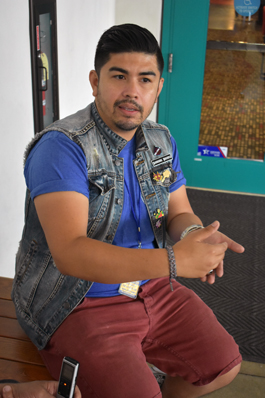
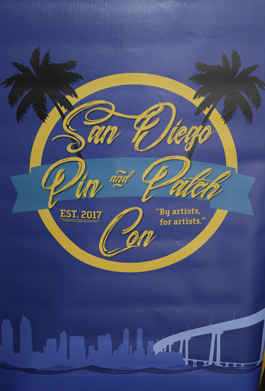 Besides an opportunity for vendors to sell their wares, the first San Diego Pin and Patch Con also represented an attempt by Brizuela and Kaloyan “to elevate the community of pins and patches into something more.” Unlike pins and patches shows in Los Angeles—which often are informal affairs with vendors bringing their own tables and chairs—this “is the way Comic-Con runs their convention, with advance ticket sales and vendor applications.”
Besides an opportunity for vendors to sell their wares, the first San Diego Pin and Patch Con also represented an attempt by Brizuela and Kaloyan “to elevate the community of pins and patches into something more.” Unlike pins and patches shows in Los Angeles—which often are informal affairs with vendors bringing their own tables and chairs—this “is the way Comic-Con runs their convention, with advance ticket sales and vendor applications.”
He said he and Kaloyan rejected a few vendors who they thought weren’t serious about the craft. He said they were looking for vendors who want to grow their business and who bring originality to creating pins and patches, as well as other products such as socks and t-shirts. “We wanted the smaller companies to see how the larger companies evolved. Our idea is to bring professionalism so the community that we love gets something they need.”
It was a diverse crowd of enthusiasts roaming the booths in Montezuma Hall.
“That’s the beauty of it,” enthused Brizuela. “You can have people who are into street wear clothing all the way to people who love cutesy animals; it’s a very melting pot of a population. At one end you may someone in button-up polo, and at the other end someone all tattooed and covered up in leather, and then you see them freaking out over the same pin –‘Oh my God, are you a Star Wars fan too?’ – and that creates a sort of community and camaraderie. You see here people of all different ages, the person who likes to collect traditional comic books… some people who like punk rock, others who like hip hop, and they coexist. It’s like a United Nations of people.”
Remembering that Comic-Con had its beginnings in San Diego, and that it was once on the periphery of mainstream culture, but today is a main event, Brizuela said pins and patches—wearable art—may possibly have a similar future.
He suggested that when earrings, other jewelry, or comic books first appeared on the scene, no one knew that they would become components of world culture.
*
Harrison is editor of San Diego Jewish World. He may be contacted via donald.harrison@sdjewishworld.com